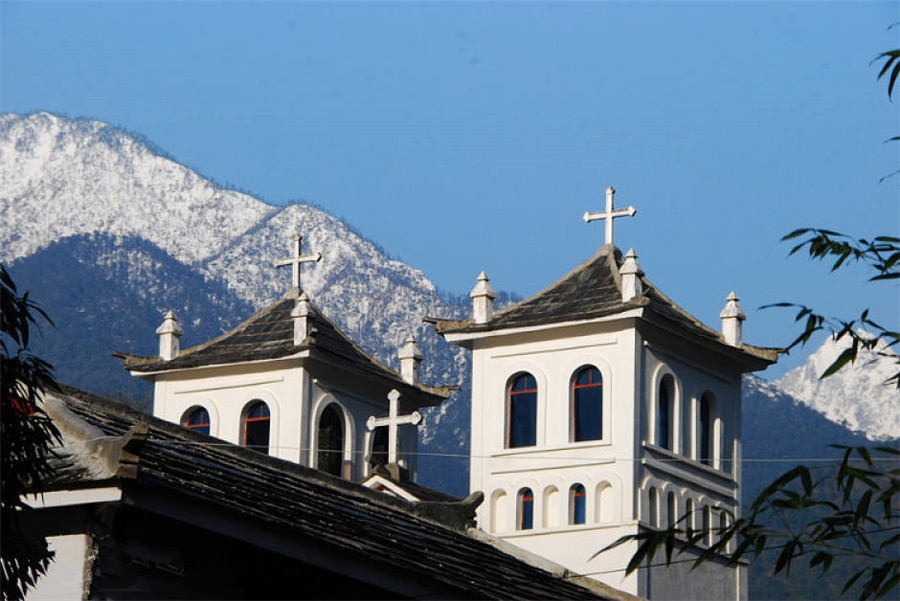Bingzhongluo Trekking Tour with the Ancient Tea Horse Caravan into Tibet from Nujiang
Trek with the last caravan into Tibet. A traditional caravan journey is like a slow passage to our past and the wild west. The road from Bingzhongluo into Tibet is part of the route known as “Tea Horse Route”. In the old days, Tibetans routinely operated mule and horse caravans on arduous long journeys from here to Lhasa, and beyond, to Nepal, Bhutan, Sikkim and India. Tea was the main commodity carried on such caravans. These caravan routes became vital arteries for cultural, economic and religious exchange between Tibet and South Asia as the tea trade flourish; just as the Silk Road was, connecting China and Europe.
The return of Caravans
Today the old, perilous Tea Horse Trail between Bingzhongluo and Cawarong (also called Tsawarong, Tibet’s easternmost town) has been abandoned and replaced by a dirt road winding through the spectacular Nujiang Gorge. One can even catch a truck to Cawarong.
When we arrived at Bingzhongluo in May 2005, the road to Cawarong had been blocked by landslides since February. No modern vehicules can pass through. Horse caravans were in operation again.
In Bingzhongluo, we saw groups of horses and mules milling at street corners waiting to set off on the next journey north. The caravan drivers would spend a couple of days in Bingzhongluo to stock up on groceries and goods to be delivered and animal feed for the journey.
Costs: In May 2005, it cost Y100/per day for travelers to rent a horse or a mule from local farmers. The caravans that carried provisions from Bingzhongluo to Cawarong charged locals each pack Y2.40 per kilo per journey. We negotiated with several Tibetan caravans and managed to get the price offered by Gina’s Caravan at Y160 for our backpacks (Y4.00 per kilo). Traveling with the caravan also allowed us to pace ourselves over the three days as well as knowing where to camp for water access.
Walking with the horse caravan can be a tiring experience. Unlike human, the horses/mules only rest twice a day- at midday (lunch) and at night when they stops. In between they do not stop walking. Therefore unlike trekking where one would normally take a break after a couple of hours, there are no such opportunities with the caravan; it can be quite tiring.
The caravans do not necessarily stop for the night in a village. In fact often they stop close to a water source and just sleep along the roadside.
Access: The trek starts at Bingzhonglou (see Getting there and away) in Yunnan and ends at Cawarong in Tibet. When the dirt road between Bingzhongluo and Cawarong is open, you can walk to Cawarong and catch a truck back to Bingzhongluo.
Walking time: We traveled with one of such caravans from Bingzhongluo to Cawarong for three days. The distance between these two places is about 80 km.
Travel Costs (as of May 2005):
- Horse/Mule Rental: ¥100 per day.
- Caravan Transport: ¥2.40 per kilo per journey for locals. Negotiated rate for backpacks was ¥160 (¥4.00 per kilo).
Itinerary:
Day 1: Bingzhongluo to Qiunatong
- Distance: ~20 km.
- Route:
- Bingzhongluo → Zhongding Village (Nujiang Crossing) → Stone Gate → Wuli → Mill → Duna Bridge → Qiunatong.
- Time: Approximately 4 hours of walking.
- Highlights:
- Enjoy the beautiful landscapes and visit two scenic villages: Wuli and Qiunatong.
- Explore the old Tea Horse Trail embedded in the cliff near Wuli.
- Accommodation: Stay overnight in Qiunatong to fully experience the stunning surroundings.
Day 2: Qiunatong to Longbu Village
- Distance: ~30 km.
- Route:
- Qiunatong → Yunnan/Tibet Border → Songta Village → Longbu Village.
- Time: About 8 hours of walking.
- Accommodation: Camping near Longbu Village or stay with villagers.
Day 3: Longbu Village to Cawarong
- Distance: ~30 km.
- Route:
- Longbu Village → Lhakangla → Flying Stone → Cawarong.
- Time: Approximately 8 hours of walking.
- Highlights:
- Part of the Meili Snow Mountains’ circumambulation (kora) route.
- Walk along the scenic, sacred river gorge adorned with Tibetan prayer flags.
- Traverse the “Flying Stones” segment, a hazardous area known for falling rocks.
- Accommodation: Arrive in Cawarong, where you can rest before proceeding.
Route Description:
- The trek follows the Nujiang River, passing through fertile lands and scenic villages. Expect diverse terrain, including high mountain slopes, deep gorges, and rocky wastelands.
- The trek is straightforward with minimal chance of getting lost due to the singular route from Bingzhongluo to Cawarong.
Food and Water:
- Food: Bring your own supplies. Caravan drivers typically prepare noodles for lunch and rice for dinner. They bring vegetables, dried meat, and condiments.
- Water: There are no stores for buying drinking water, but there are natural springs along the route. Ensure you carry enough drinking water with you.
Additional Tips:
- Physical Preparedness: Be ready for a physically demanding trek. Horses/mules rest only twice a day (midday and night), making the journey challenging.
- Accommodation: Bring a sleeping bag for camping or staying with locals. There are no power supplies, so plan accordingly for charging electronic devices.
Related Maps and Photos:
- Map: Refer to the map of Bingzhongluo and the Nujiang Gorge for navigation.
- Photos: Look for photo albums of Bingzhongluo and the trek for visual references.
This journey offers a deep dive into the historical Tea Horse Route, providing both a physical challenge and an immersive cultural experience. Enjoy the adventure!













